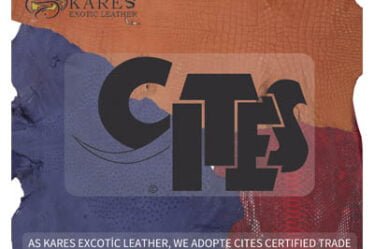The Intricacies of Using Python Leather in Handcraftsmanship
Hello, art and luxury lovers! Today, we’re diving deep—literally—and exploring what lies beneath the surface of something quite extraordinary: the use of python leather in handcraftsmanship. Get ready, because this journey won’t just inform you—it might just touch your soul and make you go, “Wow!”
So, tell me—what comes to your mind when I say “leather”? Maybe a classic jacket? Perhaps that old, reliable wallet of yours? But when I say “python leather”? That’s when you pause, maybe raise an eyebrow, and probably think, “Ooh, exotic!” And you’re absolutely right. Python leather is in a league of its own, far from your run-of-the-mill hides. It’s the Ferrari or Lamborghini of leathers—mesmerizing with its texture, allure, and one-of-a-kind scale patterns. But turning it into a true work of art requires more finesse and skill than you might think. This isn’t a simple “grab the leather, cut and stitch, and done!” situation. If you want to avoid ruining it, you need to know a few secrets.
So, what makes python leather so special? Why, among all types of leather, do artists and luxury brands gravitate toward it? The answer is simple, yet profound: uniqueness. Each python leather piece has a scale pattern as singular as a human fingerprint. Imagine holding a python leather bag or jacket—you’re not just holding a luxury item; you’re holding a one-of-a-kind work of art. That sense of exclusivity? That’s priceless. It’s not just about luxury; it’s about identity and storytelling.
Step One: Choosing the Right Leather – Beauty Comes from More Than Just Looks!
When you’re about to create your masterpiece, the first and most critical step is selecting the right leather. Don’t fall into the trap of thinking, “It’s just leather.” When buying python leather, the number one thing to look for is the CITES certificate—short for Convention on International Trade in Endangered Species of Wild Fauna and Flora. This certificate proves the leather was obtained legally, ethically, and sustainably. That way, you not only avoid legal trouble but also keep your conscience clear. No matter how beautiful the leather may seem, if it was sourced illegally, there’s a shadow over that beauty—and that’s a weight no designer wants to carry.
Quality matters just as much. Check the scale consistency, the suppleness of the leather, and look for any flaws or damage. These are the basics—the “ABC” of the craft. Keep your eyes sharp, and don’t hesitate to consult an expert. After all, even the best artisan can’t create magic from poor materials.
Knowing the Leather: More Than Just Cutting
Now comes the craftsmanship. Python leather isn’t like cowhide. Its scaled surface demands careful attention while cutting, stitching, or shaping. Say “just slice it and be done” and you’ll find yourself ruining those beautiful patterns and weakening the material—possibly beyond repair. And then comes the regret.
- Cutting: Always follow the natural direction of the scales. Don’t disrupt the flow. Your blade or scissors should be razor-sharp. Make deliberate, confident cuts. It’s not “measure twice, cut once”—it’s “think a thousand times before a single cut.”
- Stitching: Your sewing machine needles must be specialized to avoid damaging the scales. The wrong needle or thread tension could lift the scales or tear the leather. Every stitch must be sewn like setting a precious gem.
- Shaping & Gluing: Python leather stretches when wet but tends to return to its original form when dry. This quirk is essential to understand during shaping. The right adhesive and technique will add to your creation’s durability.
Creating an Emotional Bond: The Artist’s Soul in the Leather
What sets a true work of art apart? Is it just technical skill? Never. The artist’s soul—the emotion embedded in the piece—is what gives it immortality. Working with python leather is no different. Every time you touch that smooth yet scaled surface, you should feel the leather whisper something back to you. It’s not just raw material—it’s a gift from nature.
When you hold that leather and imagine the bag, jacket, or shoes it will become, give it a personality. Maybe regal elegance, maybe rebellious flair, maybe timeless grace… That feeling will flow into your piece, transforming it into something alive. You know the saying, “You can feel the hand that made it”? That’s not just about touch—it’s about emotional connection.
Conclusion: A Message of Luxury, A Legacy of Art
Crafting with python leather is truly like bringing a piece of art to life. The process demands patience, knowledge, mastery—and above all, passion. It’s not for the faint of heart. But the result? Absolutely priceless. Every scale and line tells a story—a journey. This isn’t just fashion. It’s a tribute to nature, craftsmanship, and art.
From my personal perspective, working with python leather has always felt like a dance. You need to move in rhythm with the material—respecting its natural flow, adapting without overpowering. The true satisfaction comes when you look at your finished piece and say, “I turned this into a work of art with my own hands.” And when you fall in love with something you’ve created… that’s when you know the soul, the heart, the essence is in it. And that, to me, is the definition of true luxury.



